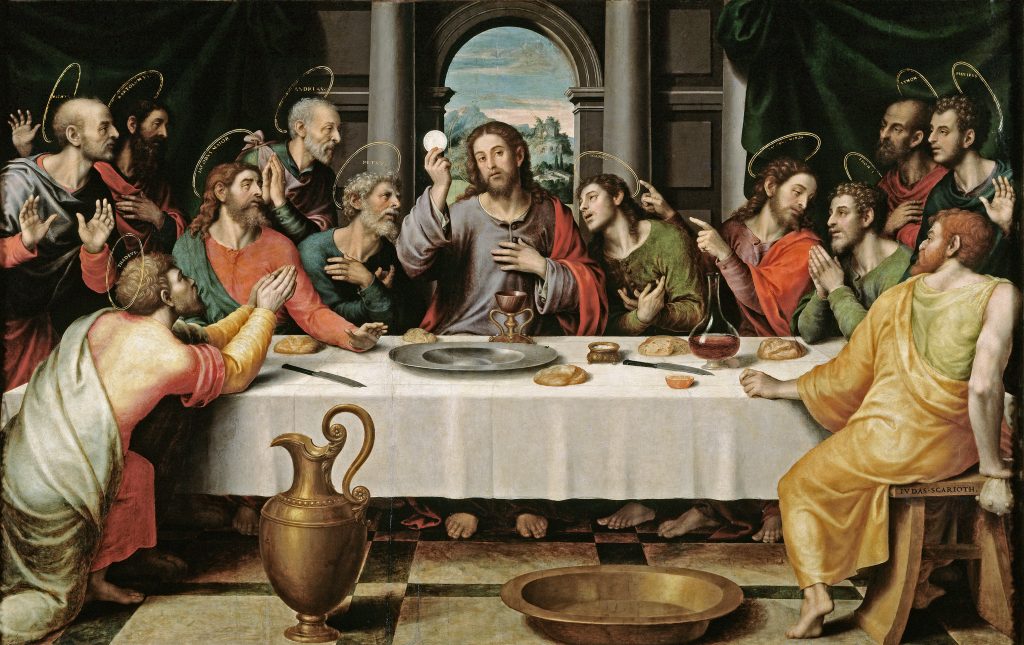
Lesson Objectives
- To learn the "big-picture" overview of the Bible - the story that the Bible tells.
- To understand the concept of "covenant" and its importance for reading and interpreting the Bible.
- To learn in general detail the six major covenants in the Bible.
IV. The Bible: A Bird's-Eye View
A. A Book of Covenants
In these six covenants you have a bird's-eye view of the whole Bible and the story of the origins and the destiny of the human race.
If we look at the Bible as the "book of the covenant" it gives us a whole new perspective.
The Bible, then, isn't simply a collection of separate poems and histories and prophecies written over the course of centuries. It's one book that tells a single story. It's the story of God's love for His people. It's the story of how He slowly and patiently unfolded his plan for the world, how He taught His people the reason they were created - to share His life with Him, to be part of His family, to be His children.
Reading the Bible from front to back as "the book of the covenant," we see that with each new covenant, God reveals a little more about Himself and a little more about the relationship that He wants with His people, until finally in Jesus He shows us that He wants us to share in His very Being, to enter into the heart of the Blessed Trinity.
B. The Course Ahead
In the next five lessons, we'll read this whole st ory, covenant by covenant. By the time we're done, you'll have glanced over every book of the Bible and will have a new framework for continuing your own study.
Remember, however, this course is not just a reading exercise. Reading the Bible is intended by our Lord to be a life-changing experience. So as you study the Bible and proceed in this course, try to keep in mind the dignity you have as sons and daughters of God, and the awesome privilege you have of being fully in communion with God in His family, the Catholic Church.
Other Lessons
- Lesson Two: From Sabbath to Flood
- To read Genesis 1-12 with understanding.
- To learn the meaning of the first two covenants of salvation history - the Sabbath, and the covenant made with Noah.
- To begin to understand the "patterns" of biblical history.
- Lesson Three: Our Father, Abraham
- To read Genesis 12-50 with understanding.
- To understand God’s covenant with Abraham and to see how that covenant is fulfilled in the New Covenant of Jesus Christ.
- To appreciate key figures and elements in the Abraham story - Melchizedek, circumcision, the sacrifice of Isaac - as they are interpreted in the Church’s tradition.
- Lesson Four: The First-Born Son of God
- To read the Books of Exodus, Leviticus, Numbers, and Deuteronomy with understanding.
- To understand God’s covenant with Israel at Sinai and to see how this covenant looks forward to and is fulfilled in the New Covenant of Jesus Christ.
- To appreciate the key figures and events - Moses, the Passover, and the vocation of Israel as “a kingdom of priests” - as they are interpreted in the Church’s tradition.
- Lesson Five: A Throne For All Generations
- To finish reading the Old Testament (from Joshua to Malachi) and to read with understanding.
- To understand the broad outlines of the history of Israel in light of God’s covenant with Abraham.
- To appreciate the crucial importance of God’s everlasting covenant with David.
- Lesson Six: The New and Everlasting Covenant
- To read the New Testament with understanding.
- To understand how the New Testament depicts Jesus as the fulfillment of the covenants of the Old Testament.
- To appreciate, especially, the importance of God’s everlasting covenant with David for understanding the mission of Jesus and the Church as it is presented in the New Testament.